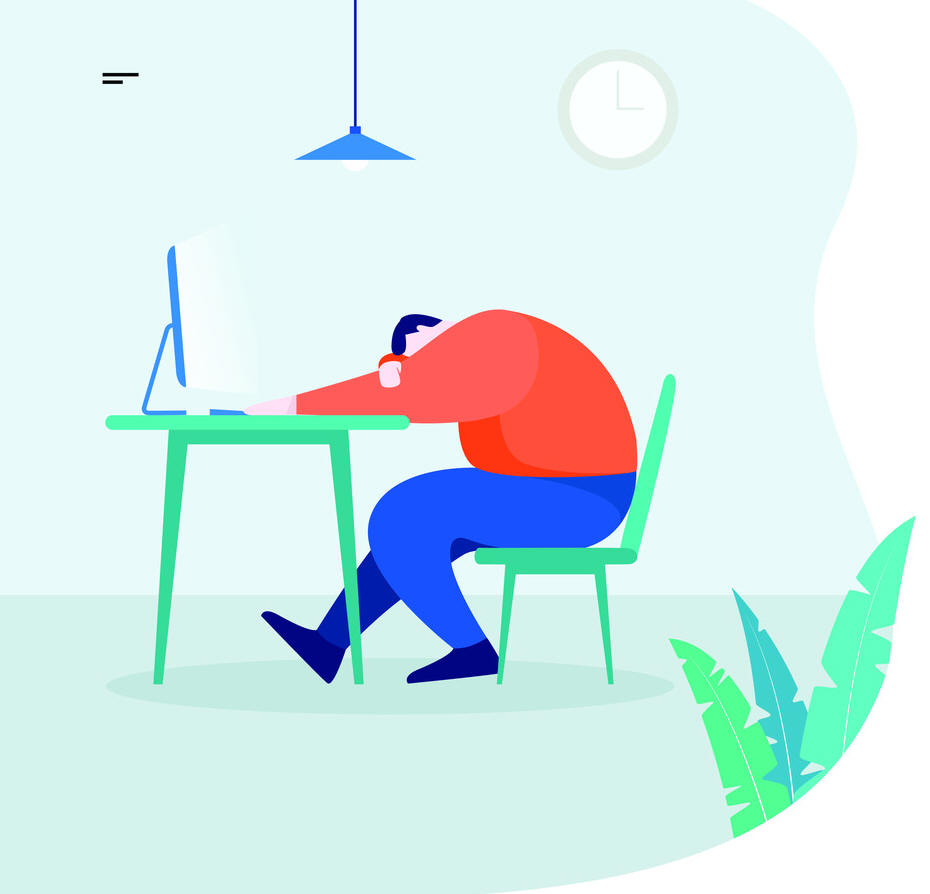 Imagine
the possibility of all high school
students in The Bahamas being able to
have a fifteen-to-thirty-minute nap each
day while in school. It is my view that
this will be invigorating and will
stimulate intellectual learning and
retention. Usually, many pre-school
and first-grade students are given an
opportunity to nap while is class. Why
not the high school students?
Imagine
the possibility of all high school
students in The Bahamas being able to
have a fifteen-to-thirty-minute nap each
day while in school. It is my view that
this will be invigorating and will
stimulate intellectual learning and
retention. Usually, many pre-school
and first-grade students are given an
opportunity to nap while is class. Why
not the high school students?
There is a false notion that older
students do not need nap time.
Truthfully, napping time is beneficial
for people of any age. The older one
gets, the more important it is to have
daily nap time. These short nap times
are called power naps. In my article
“Power Naps Can Work Miracles,” I
indicated that such short naps could do
better for the mind and body than coffee
or naps two to three hours in length.
In fact, having regular power naps can
even boost your health and longevity.
As a 70-year-old male, I have regular
nap times each day and they are
invigorating.
But in high school? Yes! Oxford
Learning Institute indicates the
following: “Sleep studies tell us that
napping—even in class—can actually
enhance academic performance and
cognitive function. Research shows that
even short naps of 20-30 minutes can
improve cognitive performance,
attention, and memory retention.” A
great percentage of students are also
sleep-deprived. Thus, power naps
rejuvenate the students and help them to
become more productive. Teachers would
be amazed at how effective a power nap
will impact learning, cognitive
processing, and behavior.
In the article “Napping: Benefits and
Tips” wellness coach Jay Vera Summer,
states: “Napping benefits high
school students by enhancing memory and
learning, improving alertness and focus,
reducing stress and boosting mood, and
increasing productivity. Studies show
that naps, particularly short ones, can
help teenagers retain information, feel
more refreshed, and better cope with the
pressures of school. This is especially
important for teens who are often
sleep-deprived due to their natural
circadian rhythm and early school start
times.”
 Some
may think that teens only need power nap
times in school because they are
watching TV or on social media for hours
after school and late into the night.
While this is true for many, the reality
is that some teenagers are actually
surrogate parents who have to manage
younger siblings and take care of the
home because their parents are too busy
working to pay the bills or are
dysfunctional due to alcohol or drug
abuse. I believe that high school
should not only be a place for
intellectual learning, be a safe place
for emotional growth and healing. It is
my view that including power naps for
high school students will greatly
increase academic and social performance
and greater results on external exams.
Some
may think that teens only need power nap
times in school because they are
watching TV or on social media for hours
after school and late into the night.
While this is true for many, the reality
is that some teenagers are actually
surrogate parents who have to manage
younger siblings and take care of the
home because their parents are too busy
working to pay the bills or are
dysfunctional due to alcohol or drug
abuse. I believe that high school
should not only be a place for
intellectual learning, be a safe place
for emotional growth and healing. It is
my view that including power naps for
high school students will greatly
increase academic and social performance
and greater results on external exams.
Let’s take a look around the world. In
Japan, power napping during school is
called “inemuri,” which means sleeping
while present. In the article “Inemuri
- the Japanese nap in between” states:
“Yes, there is a concept of power
napping in Japanese schools, primarily
through the cultural practice of
inemuri, which is sleeping while
present, and through a formal practice
of designated 'sleep breaks' or using
specialized nap pods for
students. Inemuri is a cultural norm
where napping in a public or work
setting is seen as a sign of dedication
rather than laziness, even in schools.”
China and Taiwan also have for midday
naps in schools. There are policies
that encourage students to rest after
lunch. France and other European
countries do not have a nap time for
high school students. However, the
lunch breaks are one-and-a-half hours
long to two hours. Students can go home
for lunch. Family lunchtime, even
during school days, is important in most
European countries. Although the
students do not sleep, there is much
time for relaxation.
There is no high school nap times in
African countries. However, my research
indicates that most countries around the
world are concerned about the
insufficient sleep of students and how
it is impacting their school
performance. As indicated earlier, the
insufficient sleep is not the result of
teenage defiance, but in many cases, the
result of teenagers being made surrogate
parents to younger siblings, resulting
in less study and rest time in the
home. It is now time for The Bahamas
to take another look at the education
system and adjust it to create enhanced
intellectual stimulation and social and
emotional development.

I am happy to say that a few years ago,
a student at a private high school in
The Bahamas came to me to talk about how
to deal with stress. He talked about
the dynamics in his classroom and the
management of stress and frustration
that the entire class was experiencing.
This inspired me to suggest the idea of
having a nap in school. He had never
heard about it before and was excited to
talk to his home room teacher about it.
He introduced the to his teacher who was
willing to experiment for a week. They
had a fifteen-minute nap time in the
classroom every day after lunch for one
week, and it worked miracles. Everyone
felt rejuvenated and was able to
concentrate on their assignments and
accomplish more than before.
I encourage school leadership to look
into the possibility of students having
a fifteen-minute nap in high school
every day or at least three times a
week. It can be right after lunch
period or at a time that best suits each
class. Some schools may need to extend
the school day by fifteen minutes to
make this possible. I believe it can
work. Try it. Our students need it.
Barrington H. Brennen is a marriage and
family therapist and counseling
psychologist. Send your questions or
comments to
question@soencouragement.org
or call 1242 327 1980 or visit
www.soencouragement.org